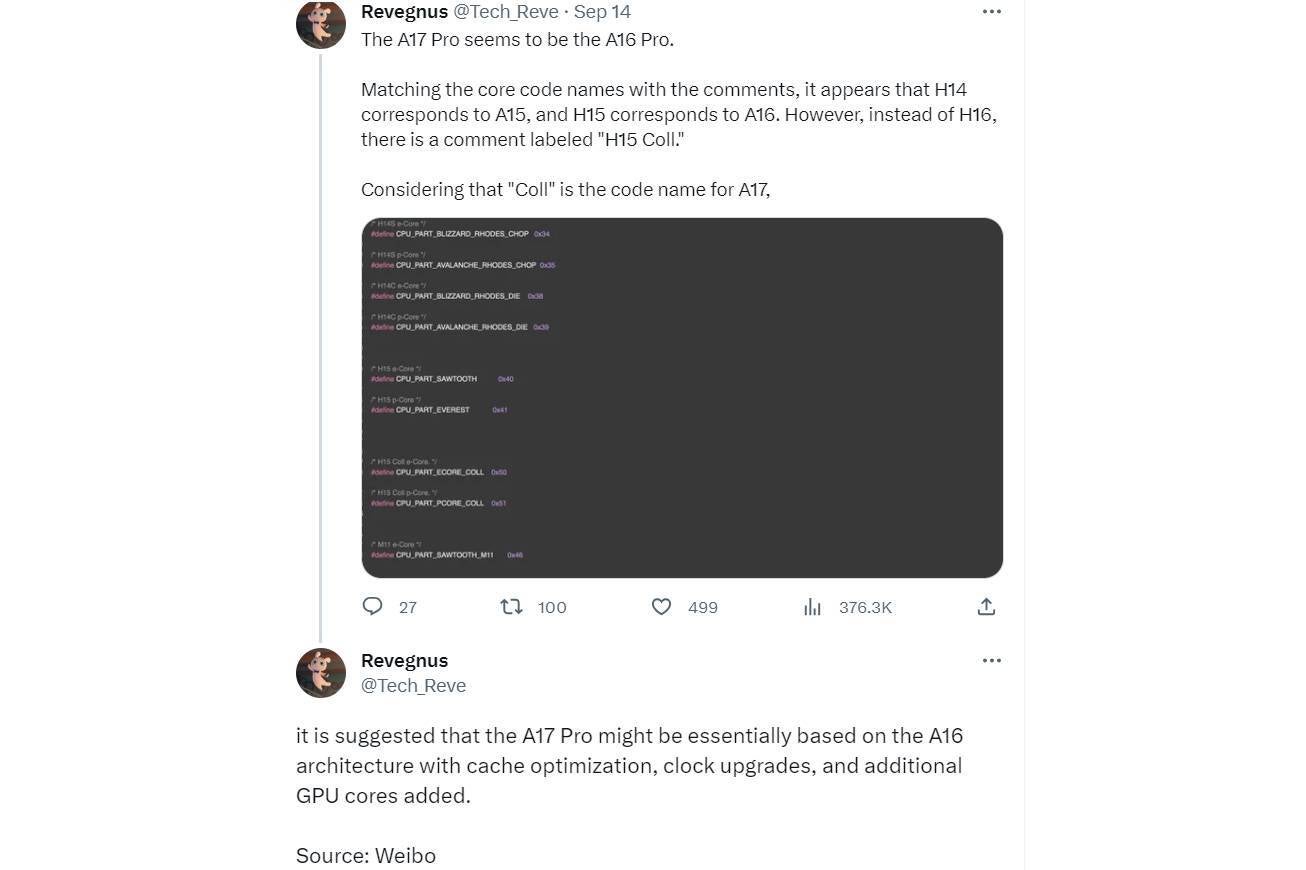
This indicates that the A17 Pro is based on the same architecture as the A16, though that by no means means that no changes have been made. They just don’t seem particularly impressive when you consider the fact that this is Apple’s first 3nm chip and are mostly limited to cache optimization, clock upgrades, and GPU changes.
TSMC’s 3nm tech is said to deliver 15 percent better performance or 35 percent improved power efficiency when compared to the 4nm process which was used for the A16 Bionic.
The alleged codename shows that Apple didn’t work all that hard on the chip. But given that the A16 was already so speedy, it all makes sense. Most importantly, the A17 Pro is still faster than flagship Android chips and it also helps that the iPhone 15 Pro has more RAM than the iPhone 14 Pro.
The A17 Pro’s GPU has six cores, one more than the A16, and Apple claims it offers 20 percent faster graphics performance than its predecessors and is also more energy efficient. The GPU also features hardware-accelerated ray tracing.
The chip’s Neural Engine is two times faster, which should result in better machine learning performance. It has 19 billion transistors, 3 billion more than the A16.







